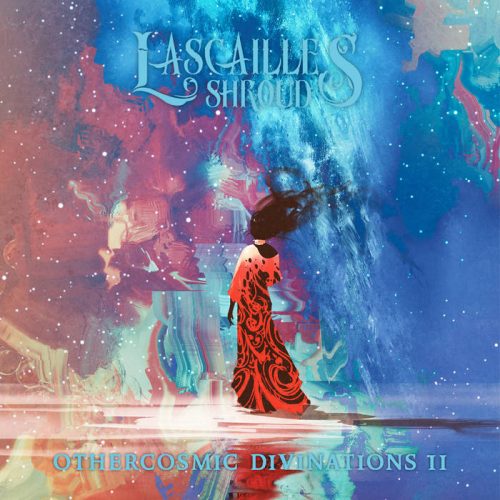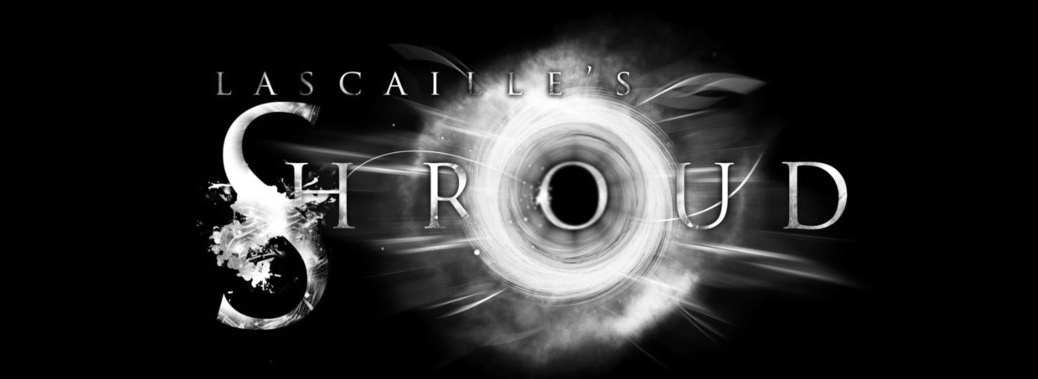
(Andy Synn ventures once more towards the outer limits with Prog-Death powerhouse Lascaille’s Shroud)
As I mentioned earlier this week, when we like a band here at NCS we try our best to stick with them, through thick and thin, and keep tabs on what they’re doing.
Sometimes, however, we’re more successful at this than others, as the case of sci-fi solo artist Lascaille’s Shroud so clearly demonstrates.
While we wrote at length about each of the project’s first three albums, we somehow lost touch with them soon after that, and although my bonus edition of The Synn Report last November went some way towards making up for this (by covering the entirety of their back-catalogue, including the three albums they’d released since we last checked in with them) I still felt bad that we’d allowed ourselves to lose touch with a band we’d once been so enthusiastic about.
With that in mind, there was no way I was going to make the same mistake with Othercosmic Divinations II (which was released just last week), and it’s a good thing too, as it’s yet another impressive addition to the legacy of Lascaille’s Shroud.

LS mainman Brett Windnagle has always been a serious riffmonger, and OC II is no exception in this regard, delivering a plethora of beefy riffs, gargantuan grooves, and chattering, almost percussive, picking patterns all designed with an almost 50/50 blend of hookiness and heaviness in mind.
But what’s particularly noticeable about this album – and, indeed, it’s something which has been increasingly notable in all the post Tiger’s Daughter albums – is the increased sense of focus, and the more refined dynamic, underpinning every song.
I wouldn’t necessarily call it a “less is more” philosophy (not when the last track is still almost twenty minutes long) but it speaks volumes about Brett’s increasing confidence and ever-improving songwriting skills that he’s seemingly become more and more focussed (focussed being the key word here) on using fewer, but stronger, riffs to construct each track, and more and more willing to give them the necessary room to breathe and grow.
As a result, although the underlying DNA of the band’s sound remains largely unaltered – there’s still a fair bit of recognisable genetic material from bands such as Allegaeon, Scar Symmetry, etc, as well as a growing (but still relatively subtle) Gojira influence at work – you can clearly trace the path of the project’s ongoing evolution over the last several albums (and beyond), with every new release further tightening, polishing, and streamlining the band’s signature sound.
Take “A Cruel & Quiet Sacrifice I”, for example.
Following a shamelessly synthy intro more ostentatious than anything I’ve heard since the last Mesarthim release (not counting the one which came out a few days ago, which I haven’t heard yet), “…Sacrifice I” kicks in with a surprisingly simple, yet undeniably powerful, riff that essentially serves as a foundation for the entire track, as various iterations of it (or, at least, of its central themes) crop up again and again over the course of the song.
The reason this works so well, of course, as the chunky, chug-driven main variant transitions into the more straightforward and stripped-down solo backing, then a darker, doomier version, then a faster, more frantic form, is because each of these changes is clearly part of a coherent continuum, one which maintains continuity throughout the track’s almost ten minute run-time, thus allowing the multiple layers of gleaming synths and shining leads greater leeway to run wild without threatening the song’s structural integrity.
And, as you progress through the album further, what you’ll find is that this layering effect is key to its overall success, with each song – from the unexpectedly atmospheric, Allegaeon-esque “…Sacrifice II”, to the stunning, slow-burn intensity of “What of You There is in Me” – being built from the ground up around a solid core of powerful, pristinely-crafted riffs, atop which is added a variety of snarling vocal hooks, soaring solos, moody ambient embellishments, and glistening cybernetic synthscapes, all without losing sense of where it came from or sight of where it’s going.
This is particularly impressive during colossal closer “To Heal the World” (arguably one of the best “long-form” tracks in the band’s discography), which contains some of the album’s mightiest riffs (including more than a few nods towards Gojira’s particular brand of surprisingly simple, yet stunningly effective, biomechanical bombast) and uses them to provide the central skeletal structure for the track, over which the various layers of melodic, ambient, synthetic, and atmospheric parts are then combined and intertwined to fully flesh out its final shape.
So, is Othercosmic Divinations II the best album in the Lascaille’s Shroud catalogue?
My gut instinct is to say no (Othercosmic Divinations I probably still takes the crown for me), but there’s definitely something about it, a more confident grasp of dynamic, a more eloquent style of writing that says more with less (and does so more clearly and coherently), which marks it out as another small, but significant, step up the evolutionary ladder for Brett as an artist.
And, really, what more can you ask than that?
